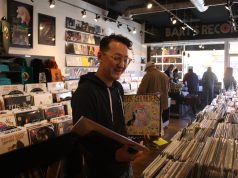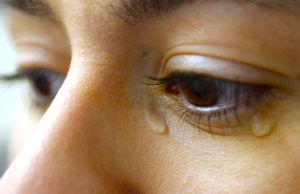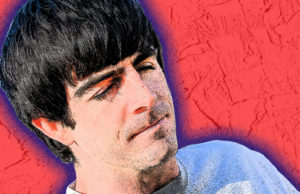LOS ANGELES — The eighth “Harry Potter” film flew
into theaters this weekend and cast a spell over fans worldwide, as the
final movie about the boy wizard had the highest-grossing opening of all
time at the domestic and international box office.
“Harry Potter and the Deathly Hallows — Part 2”
conjured an unprecedented $168.6 million in the U.S. and Canada in just
three days, whizzing past the $158.4 million record set by 2008’s “The
Dark Knight,” according to an estimate by distributor Warner Bros. The
movie also had the biggest international debut ever, grossing a magical
$307 million overseas in 59 foreign countries.
The last installment in the massively popular
franchise began breaking box-office records only hours after it opened
on Friday — selling more tickets during post-midnight screenings than
any other movie in history, and then passing the milestone for all-time
highest single-day-gross with $92.1 million. The movie went on to gross
far more than any “Harry Potter” film has on its first weekend in
theaters. “Harry Potter and the Deathly Hallows — Part 1,” released last
November, previously held that record with $125 million in ticket sales
upon its debut.
Abroad, the film topped the $236 million opening of
“Harry Potter and the Half-Blood Prince” by 30 percent. Not
surprisingly, the movie performed best in England, where author J.K.
Rowling and the film’s major stars are from, collecting $36.6 million.
The movie also raked in a big number of ticket sales in Australia,
Germany and France. It will not open in China until next month.
But just how big can the numbers get? Did the
franchise’s die-hard fans all rush out to see the final “Potter” movie
on its first weekend, or will they continue to show up in the coming
weeks for repeat viewings? “Deathly Hallows — Part 1” grossed a powerful
$955 million worldwide in 2010, and Dan Fellman, president of domestic
distribution for Warner Bros., said he thinks that the last film’s
momentum will propel it past the $1 billion mark at the global box
office.
“We had the most successful franchise in the history
of the motion picture business and we had a huge fan base. We also got
fantastic reviews,” Fellman said. “That all enables us to expand our
footprint. We are going to be around for a long time.”
Those who saw the film did love it, giving it an
average grade of A, according to market research film CinemaScore.
“Deathly Hallows — Part 2,” also the best-reviewed film of the series,
appealed to a broad audience, though the crowd was somewhat more female
(54 percent) than male (46 percent). Folks of all ages saw the movie: 28
percent of the crowd was under 18, while 20 percent was between the
ages of 45 and 49. The film was also the first in the franchise to be
released in 3-D, and about 43 percent of the audience watched it in that
format.
“Avatar,” the highest-grossing film in the history of
the box office, grossed $2.8 billion worldwide in 2009 — a record
“Deathly Hallows — Part 2” likely won’t come close to touching. The
majority of the audience who saw the James Cameron film watched it in
3-D, but “Potter” fans do not appear to be as eager to purchase a
pricier ticket to do the same.
“To expect this ‘Potter’ movie to do ‘Avatar’ numbers
isn’t realistic when none of the other ‘Potter’ films have done over a
billion dollars worldwide,” said Paul Dergarabedian, president of the
box office division for Hollywood.com. “Certainly this is going to be
the ‘Potter’ film that gets over a billion dollars. And only eight films
have ever earned over a billion dollars at the worldwide box office.”
The final “Potter,” Dergarabedian believes, does have
a viable shot of becoming the third highest-grossing film of all time,
behind “Avatar” and “Titanic,” which made $1.8 billion globally in 1997.
Unlike those movies, however, “Harry Potter” has a host of ancillary
marketing opportunities including theme parks and video games that will
continue to make money for Warner Bros. outside of the film franchise
for years to come.
Interestingly, a bulk of the U.S. business for
“Deathly Hallows — Part 2” came from Salt Lake City. Utah’s Megaplex
Theaters at Jordan Commons sold more tickets to the final “Potter” film
than any other theater in the country with $360,400 in receipts.
Theaters in New York and San Francisco followed behind, but the fifth
highest-grossing theater was also in Salt Lake.
At Jordan Commons, all 17 of the theater’s screens
were playing “Harry Potter” at midnight on Friday. Tickets for the film
were selling out so rapidly online in the weeks leading up to the film’s
debut that the theater decided to show the movie virtually non-stop for
the first 24 hours of the movie’s release. The cinema also ran marathon
screenings of previous “Harry Potter” installments before “Deathly
Hallows — Part 2” premiered and sold V.I.P. ticket packages that allowed
certain patrons to sip on Butterbeer and participate in costume
contests.
The headquarters of The Church of Jesus Christ of
Latter-day Saints, of course, is headquartered in Salt Lake City. And
Jeffrey Roy Holland, a Mormon senior apostle, appears to be a “Potter”
supporter, having referred to Rowling’s books in public addresses.
“Utah clearly has some avid ‘Harry Potter’ fans,”
said Jeff Whipple, marketing director for Megaplex theaters. “We hear
from a lot of families that were reading the books together, and we had
multiple generations come out to see the film together. The LDS church
embraces that kind of activity.”
Meanwhile, the only film brave enough to open
opposite the “Harry Potter” juggernaut this weekend was “Winnie the
Pooh,” Disney’s attempt to reintroduce the iconic honey-loving bear to
modern audiences. But the hand-drawn animated film, rated G, mustered
only $8 million in ticket sales.
Those who saw “Pooh” — an audience dominated by
families, which accounted for 85 percent of those who saw the movie —
liked it, giving it an average grade of A-minus. Disney, which spent
about $30 million to produce the movie, can only hope that the strong
grade will help “Pooh” hold up well in the coming weeks as the “Harry
Potter” buzz begins to fade.
———
(c) 2011, Los Angeles Times.
Visit the Los Angeles Times on the Internet at http://www.latimes.com/.
Distributed by McClatchy-Tribune Information Services.














